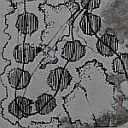0236 An Architect at War: Adrian Berrington and the Environment of the Modern Battlefield of the First World War
Identifiers (Article)
Identifiers (Files)
Abstract
This article asks how fighting on the modern battlefields of the First World War shaped an architect-soldier’s perception and concept of space and changed his architectural designs. Against the background of a brief discussion of contemporary and recent accounts that discuss the war experience in spatial terms, the article presents an exemplary case study of the military career of the English architect Adrian Berrington (1886–1923). Before the war Berrington belonged to the circle of the urban sociologist Patrick Geddes (1854–1932), during the war he underwent shell-shock therapy at Craiglockhart War Hospital together with the war poet Wilfred Owen (1893–1918). A detailed analysis of Berrington’s war letters and selected designs shows how the war changed his concept of space to a degree that pre-war principles no longer offered guidance for his post-war designs.
Statistics


License

This work is licensed under a Creative Commons Attribution-NonCommercial-NoDerivatives 4.0 International License.



